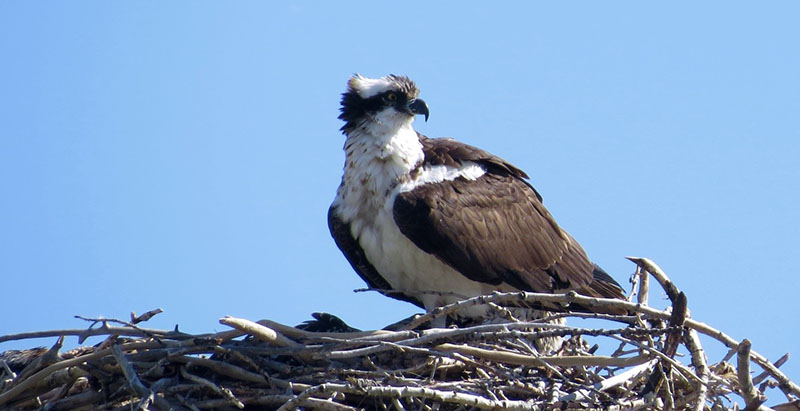
'The Fraternity of Fly Fishers'
July 14, 2014

"the character of the stream and its fish always establishes he best pattern of fly and the best manner of fishing it, not the fisherman." Vincent Marinaro, The Modern Dry Fly Code, Pg. 8

"A fellow angler" - Image by Neil Travis
 This column will be the final part of the bait minnows that have major importance to the saltwater fly angler. The minnows that I will be covering are Silversides, Anchovies, Sardines and Ballyhoo and the Glass Minnow.
This column will be the final part of the bait minnows that have major importance to the saltwater fly angler. The minnows that I will be covering are Silversides, Anchovies, Sardines and Ballyhoo and the Glass Minnow.
Glass Minnow imitations are used to imitate the first three minnows we will be discussing. The Ballyhoo was added just to confuse you and make thing difficult because at times I just enjoy being contrary.
 Soda Butte Creek is one of major tributaries to Lamar River. Indeed its junction to the Lamar is as popular and crowded as "Junction Pool" on Madison River (where Firehole and Gibbon Rivers merge). Food sources, effective flies, holding waters, and trout actions are very much the same as for the Lamar. The only one difference is the volume is far smaller. Yet this doesn't mean the sizes of the cutthroat are smaller than those in the Lamar. Indeed one can be surprised by the sizes and quality of cutthroat on the Soda Butte.
Soda Butte Creek is one of major tributaries to Lamar River. Indeed its junction to the Lamar is as popular and crowded as "Junction Pool" on Madison River (where Firehole and Gibbon Rivers merge). Food sources, effective flies, holding waters, and trout actions are very much the same as for the Lamar. The only one difference is the volume is far smaller. Yet this doesn't mean the sizes of the cutthroat are smaller than those in the Lamar. Indeed one can be surprised by the sizes and quality of cutthroat on the Soda Butte.
 It was a Tuesday and I watched the Weather Channel and saw that we had storms coming toward us. They were calling for heavy rain and then cooler temperatures for a few days after that. I decided that I needed to head out before the water got any dirtier. I grabbed a 3 weight and the 1 weight and headed out. I also took two boxes of flies with me.
It was a Tuesday and I watched the Weather Channel and saw that we had storms coming toward us. They were calling for heavy rain and then cooler temperatures for a few days after that. I decided that I needed to head out before the water got any dirtier. I grabbed a 3 weight and the 1 weight and headed out. I also took two boxes of flies with me.
 This past Father's Day, I was treated to a number of gifts and thoughts that truly made the day a special one. From BBQ essentials and a wonderful family display, to a picnic breakfast in the park and gift cards to places that sell fly fishing gear. I was a truly blessed father. A fact that didn't come as a shock, since I already knew that. My youngest son then proposed the main part of his gift, which was to declare the schedule as well. I was to be treated to breakfast, and then I would be taking him fly fishing. "But we have to go where we can get in the water", was his stipulation. Meaning, we needed to be fishing a stream for trout. I smiled and agreed, knowing full well the implication was that I would be the guide/ untangler/ net guy for the day. A task in itself that isn't all bad however, and I accepted it with a smile.
This past Father's Day, I was treated to a number of gifts and thoughts that truly made the day a special one. From BBQ essentials and a wonderful family display, to a picnic breakfast in the park and gift cards to places that sell fly fishing gear. I was a truly blessed father. A fact that didn't come as a shock, since I already knew that. My youngest son then proposed the main part of his gift, which was to declare the schedule as well. I was to be treated to breakfast, and then I would be taking him fly fishing. "But we have to go where we can get in the water", was his stipulation. Meaning, we needed to be fishing a stream for trout. I smiled and agreed, knowing full well the implication was that I would be the guide/ untangler/ net guy for the day. A task in itself that isn't all bad however, and I accepted it with a smile.
 We get a number of fly fishing type magazines and periodicals and I peruse several online publications each month. One of the magazines that come in the mail is Angling Trade® – the buzz on the fly-fishing biz. The editor, Kirk Deeter, is a well-known editor and author and his name graces the masthead of many fly fishing publications. This magazine is published four times a year and also has an online edition. Since it's a magazine that is slanted toward the business end of fly fishing it's not a magazine that most anglers would find to be of interest since it does not contain "how to" articles directed at anglers but "how to" articles directed at fly shops and other business that are trying to get the angler's dollars.
We get a number of fly fishing type magazines and periodicals and I peruse several online publications each month. One of the magazines that come in the mail is Angling Trade® – the buzz on the fly-fishing biz. The editor, Kirk Deeter, is a well-known editor and author and his name graces the masthead of many fly fishing publications. This magazine is published four times a year and also has an online edition. Since it's a magazine that is slanted toward the business end of fly fishing it's not a magazine that most anglers would find to be of interest since it does not contain "how to" articles directed at anglers but "how to" articles directed at fly shops and other business that are trying to get the angler's dollars.
![]() I was invited by a friend to join him for a day on a private wild trout stream in the Pocono Mountains of Pennsylvania. He is a featured tier at the winter shows and a member of our local chapter of TU so we had met over tying but had never fished together. I had no expectations other than knowing that he seemed to be a good guy and any time you can get the opportunity to hit some wild trout water in this area you take it. The water had been offered by a fellow fly fisherman who guards his resource with great tenacity. He allows fly fishing only/catch and release fishing, so we were indeed honored to have the opportunity to fish this water.
I was invited by a friend to join him for a day on a private wild trout stream in the Pocono Mountains of Pennsylvania. He is a featured tier at the winter shows and a member of our local chapter of TU so we had met over tying but had never fished together. I had no expectations other than knowing that he seemed to be a good guy and any time you can get the opportunity to hit some wild trout water in this area you take it. The water had been offered by a fellow fly fisherman who guards his resource with great tenacity. He allows fly fishing only/catch and release fishing, so we were indeed honored to have the opportunity to fish this water.
 A Great recipe for partridge that Tom Deschaine submitted before passing.
A Great recipe for partridge that Tom Deschaine submitted before passing.
 The rusty spinner is one of my "go to flies" when I am fishing on one of my local spring creeks during the evening hours. It is a good imitation for the Pale Morning Dun spinner and it seems to work well during those times when there are no spinners evident.
The rusty spinner is one of my "go to flies" when I am fishing on one of my local spring creeks during the evening hours. It is a good imitation for the Pale Morning Dun spinner and it seems to work well during those times when there are no spinners evident.
My flies are not as good looking as Byron's but they seem to work for me. It was over 40 years ago when I had the great pleasure to meet fish with and become a friend with Vince Marinaro. He showed me his favorite spinner pattern, which is illustrated in his first book, A Modern Dry Fly Code. Vince would wrap the thorax area of his flies with hackle and then clip the hackle to form the wings. He would clip the hackle from the top and the bottom making a fly with completely spent wings or he would clip the hackle to allow the wings to be slightly lifted off the water. Since that time I have tied most of my spinners using this technique.
[ HOME ]
[ Search ] [ Contact FAOL ] [ Media Kit ]